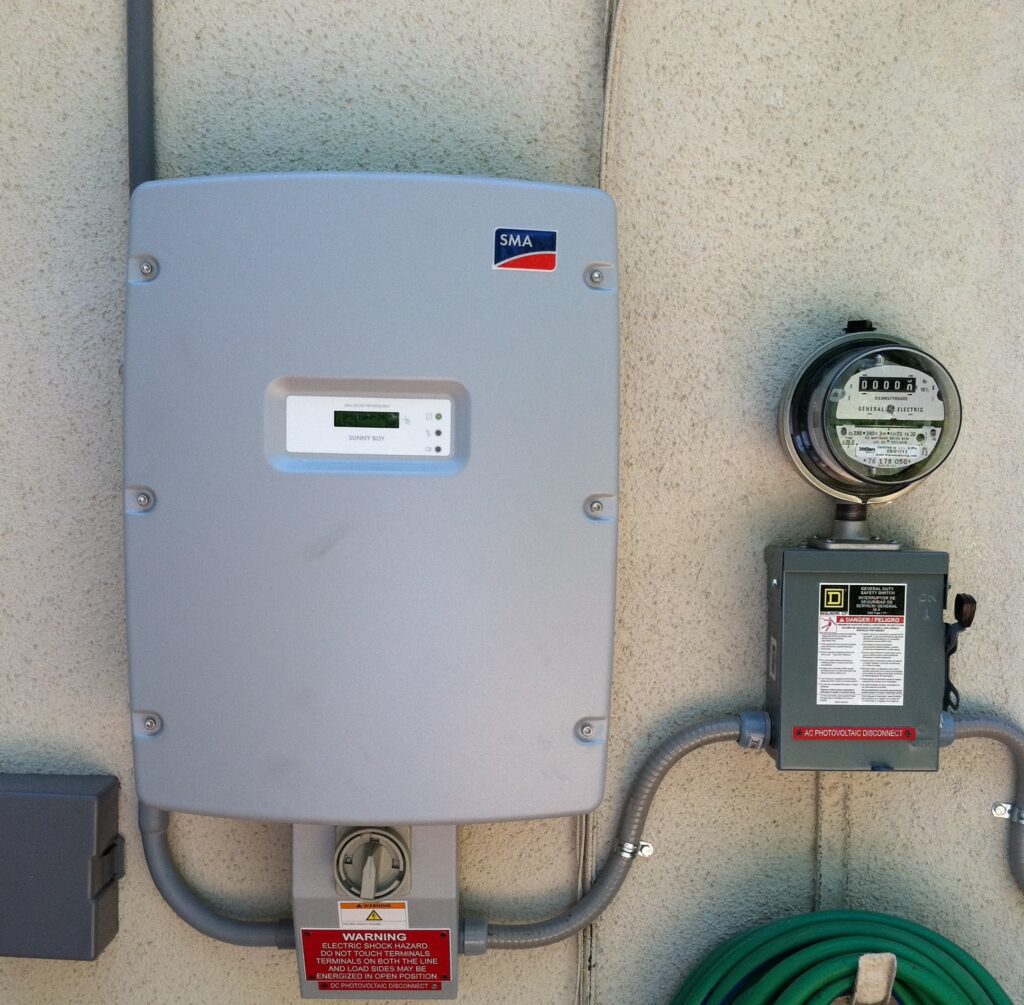Illuminating Opportunities: How Declining Interest Rates Impact the Solar Industry
The solar industry, a beacon of sustainable energy solutions, has been witnessing remarkable growth in recent years. As global concerns about climate change intensify, the push for renewable energy sources, particularly solar power, has gained momentum. In this blog, we will explore the potential effects of declining interest rates on the solar industry, delving into […]
Electrifying Homes: The Surge in Installing EV Chargers in California
As California continues to spearhead the transition to a sustainable and eco-friendly future, the focus on electric vehicles (EVs) has become increasingly prominent. With a burgeoning population of electric cars on the roads, the need for convenient and accessible charging infrastructure is paramount. In this blog, we’ll explore the landscape of installing EV chargers in […]
The Evolution of Net Energy Metering (NEM): A Comprehensive Guide to the Latest Updates

Title: The Evolution of Net Energy Metering (NEM): Paving the Way for Sustainable Energy
Introduction:
Net Energy Metering (NEM) has played a pivotal role in transforming the landscape of renewable energy adoption, particularly in the context of solar power. This article explores the evolution of NEM, tracing its origins, milestones, and the significant impact it has had on the renewable energy sector.
Section 1: Inception of Net Energy Metering (NEM):
In the late 20th century, as solar technology began to gain traction, the challenge of integrating renewable energy into existing power grids emerged. The concept of Net Energy Metering was born as a solution. In its early iterations, NEM aimed to encourage the installation of small-scale residential solar systems by allowing consumers to offset their electricity bills through excess energy generation.
Section 2: NEM 1.0 – The Pioneer Phase:
NEM 1.0 marked the initial implementation of this groundbreaking policy. Rolled out in various jurisdictions, it allowed solar-equipped households to feed surplus energy into the grid and receive credits for the excess electricity. Although a significant step forward, NEM 1.0 had limitations, including capacity caps and restrictions on system sizes.
Section 3: NEM 2.0 – Addressing Challenges:
As the solar industry grew, NEM faced challenges, prompting the evolution to NEM 2.0. This version aimed to address shortcomings and create a more sustainable framework. Key features included changes to rate structures, enhanced billing transparency, and increased flexibility for solar consumers. NEM 2.0 sought to strike a balance between promoting solar adoption and addressing concerns from utilities.
Section 4: NEM 3.0 – Current Developments:
In recent years, the landscape of renewable energy and solar technology has continued to evolve. NEM 3.0 represents the latest phase in this journey. This section explores the updates and changes introduced in NEM 3.0. Whether through adjustments in compensation mechanisms, revisions to capacity limits, or incorporation of time-of-use rates, NEM 3.0 is designed to align with contemporary energy goals and technological advancements.
Section 5: Impact on Residential Solar Users:
One of the core aspects of NEM’s evolution has been its impact on residential solar users. NEM 3.0, like its predecessors, influences the economics of solar installations for homeowners. This section delves into the nuances of how NEM 3.0 affects compensation for excess energy, offering insights into the benefits and considerations for those considering residential solar.
Section 6: Commercial and Industrial Implications:
Beyond residential users, NEM has significant implications for commercial and industrial solar installations. NEM 3.0 introduces changes in rate structures and capacity limits, shaping the landscape for larger-scale solar projects. This section explores how these alterations influence the decisions of businesses and industries considering solar adoption.
Section 7: Incentives for Energy Storage Integration:
In response to the increasing relevance of energy storage, NEM 3.0 includes provisions that incentivize the integration of energy storage systems with solar installations. This section examines how NEM has adapted to the growing importance of energy storage, promoting grid stability and resilience.
Section 8: Addressing Challenges and Controversies:
Throughout its evolution, NEM has faced challenges and controversies. From debates over fair compensation to concerns raised by utilities, this section provides an overview of the issues that have surrounded NEM. It also discusses how each iteration has sought to address these challenges to create a more balanced and sustainable energy landscape.
Section 9: Case Studies: Real-world Applications of NEM 3.0:
To bring the discussion to life, this section presents real-world case studies illustrating the application and impact of NEM 3.0. Examining specific examples from different regions provides a practical understanding of how NEM 3.0 operates and its implications for diverse stakeholders.
Section 10: Future Outlook and Emerging Trends:
As technology and energy policy continue to advance, this section speculates on the future of NEM and its role in shaping the renewable energy landscape. Exploring emerging trends, such as smart grid technologies and advancements in solar efficiency, provides a glimpse into what might lie ahead for NEM.
Conclusion: NEM’s Enduring Legacy and Future Contributions:
In conclusion, NEM’s evolution from its inception to the current NEM 3.0 reflects the dynamic nature of the renewable energy sector. From addressing teething issues in the early stages to adapting to contemporary challenges, NEM has played a crucial role in fostering the growth of solar power. As the energy landscape continues to transform, NEM is likely to remain a linchpin, adapting and evolving to ensure a sustainable and equitable energy future.
Common Issues with Sunny Boy Inverters: A Comprehensive Guide for Residential Solar Owners

As a proud owner of a residential solar system, you recognize the significance of maintaining a smooth and efficient solar setup. Among the essential components, the inverter plays a crucial role in converting the direct current (DC) power generated by your solar panels into usable alternating current (AC) electricity for your home. In this extensive […]
Solar Module Replacement: Upgrading and Enhancing Your Solar Power System | EnergyAid

Solar modules, also known as solar panels, are the backbone of any solar power system. They harness sunlight and convert it into electricity, enabling clean and renewable energy generation. Over time, solar modules may require replacement due to various factors such as aging, damage, or advancements in technology. In this article, we will explore the […]
Troubleshooting Guide: Why Isn’t My Solar Inverter Working?

Are you experiencing issues with your residential grid-tied solar inverter? Don’t worry, you’re not alone. Solar inverters play a crucial role in converting the direct current (DC) generated by your solar panels into usable alternating current (AC) for your home. However, like any electrical equipment, they can encounter problems. In this comprehensive troubleshooting guide, we […]
Troubleshooting Solar Batteries: Identifying and Resolving Common Issues | EnergyAid

Solar batteries are an essential component of a reliable and efficient solar power system. They store excess energy generated by your solar panels for later use, ensuring continuous power supply even during periods of low or no sunlight. However, like any technology, solar batteries can experience issues that require troubleshooting. In this article, we will […]
Do I Need to Clean My Solar Panels? Unveiling the Importance of Regular Maintenance

As a solar panel owner, you may wonder whether cleaning your solar panels is necessary. The answer is yes! Regular maintenance, including cleaning, is essential for ensuring the optimal performance and longevity of your solar panel system. In this article, we will delve into the reasons why cleaning your solar panels is crucial and explore […]
